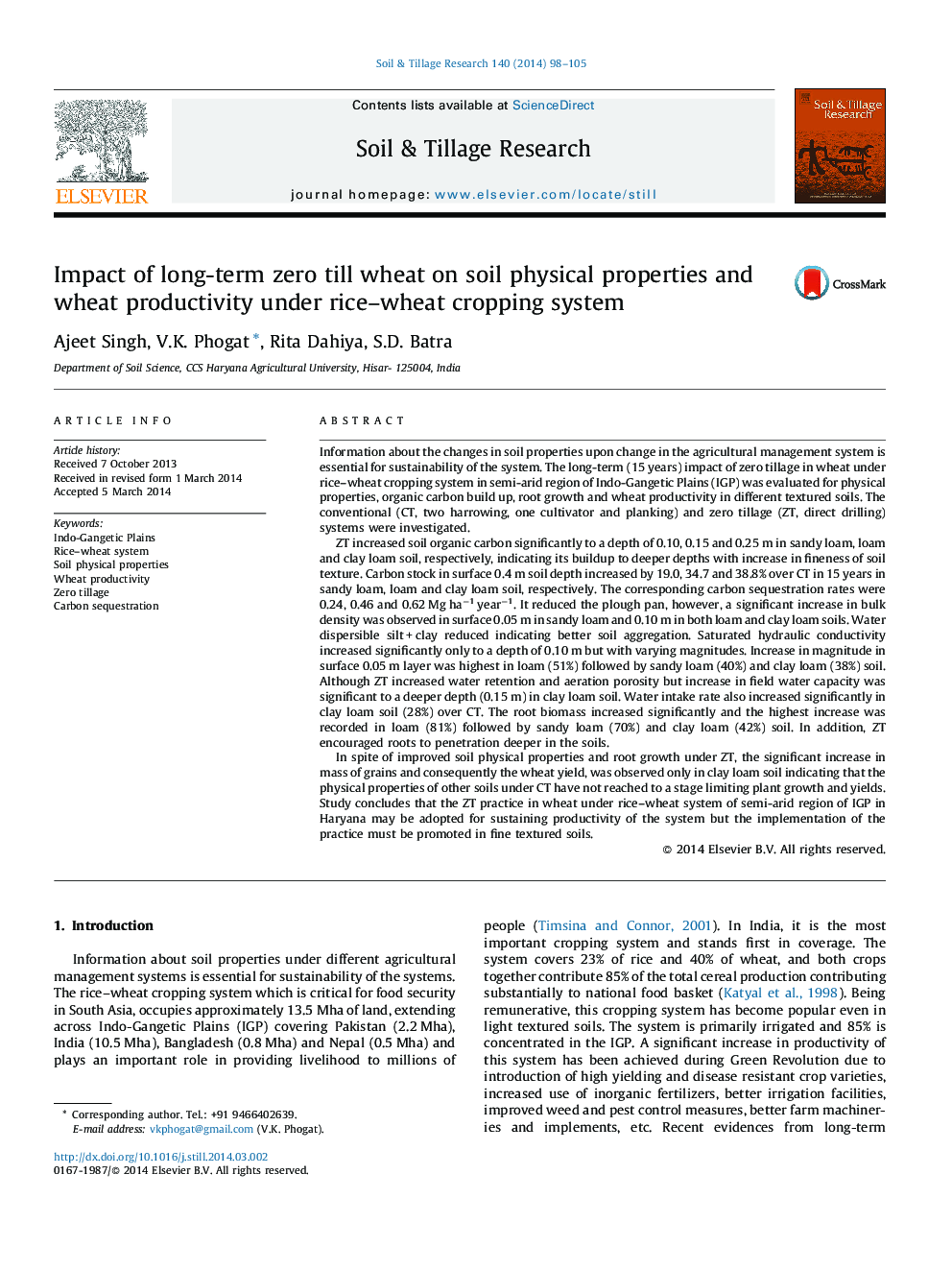| Article ID | Journal | Published Year | Pages | File Type |
|---|---|---|---|---|
| 305749 | Soil and Tillage Research | 2014 | 8 Pages |
•Long-term impact of zero tillage in wheat under rice–wheat system was evaluated.•Soil OC, aggregation, root penetration increased and sub-soil compaction reduced.•Effect was variable with depth and in magnitude in different textured soils.•Improved conditions increased wheat productivity significant in clay loam soil.•Zero tillage found more suitable in fine than medium or coarse textured soil.
Information about the changes in soil properties upon change in the agricultural management system is essential for sustainability of the system. The long-term (15 years) impact of zero tillage in wheat under rice–wheat cropping system in semi-arid region of Indo-Gangetic Plains (IGP) was evaluated for physical properties, organic carbon build up, root growth and wheat productivity in different textured soils. The conventional (CT, two harrowing, one cultivator and planking) and zero tillage (ZT, direct drilling) systems were investigated.ZT increased soil organic carbon significantly to a depth of 0.10, 0.15 and 0.25 m in sandy loam, loam and clay loam soil, respectively, indicating its buildup to deeper depths with increase in fineness of soil texture. Carbon stock in surface 0.4 m soil depth increased by 19.0, 34.7 and 38.8% over CT in 15 years in sandy loam, loam and clay loam soil, respectively. The corresponding carbon sequestration rates were 0.24, 0.46 and 0.62 Mg ha−1 year−1. It reduced the plough pan, however, a significant increase in bulk density was observed in surface 0.05 m in sandy loam and 0.10 m in both loam and clay loam soils. Water dispersible silt + clay reduced indicating better soil aggregation. Saturated hydraulic conductivity increased significantly only to a depth of 0.10 m but with varying magnitudes. Increase in magnitude in surface 0.05 m layer was highest in loam (51%) followed by sandy loam (40%) and clay loam (38%) soil. Although ZT increased water retention and aeration porosity but increase in field water capacity was significant to a deeper depth (0.15 m) in clay loam soil. Water intake rate also increased significantly in clay loam soil (28%) over CT. The root biomass increased significantly and the highest increase was recorded in loam (81%) followed by sandy loam (70%) and clay loam (42%) soil. In addition, ZT encouraged roots to penetration deeper in the soils.In spite of improved soil physical properties and root growth under ZT, the significant increase in mass of grains and consequently the wheat yield, was observed only in clay loam soil indicating that the physical properties of other soils under CT have not reached to a stage limiting plant growth and yields. Study concludes that the ZT practice in wheat under rice–wheat system of semi-arid region of IGP in Haryana may be adopted for sustaining productivity of the system but the implementation of the practice must be promoted in fine textured soils.
